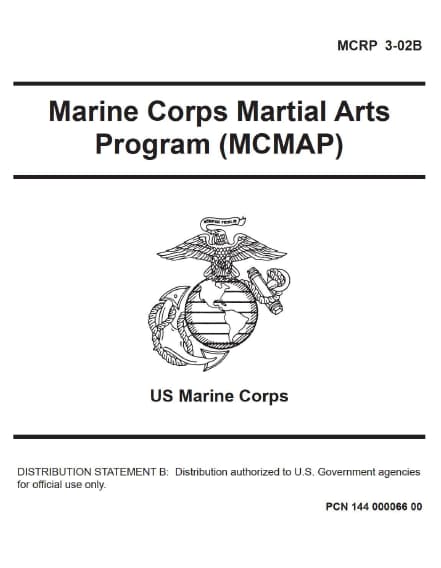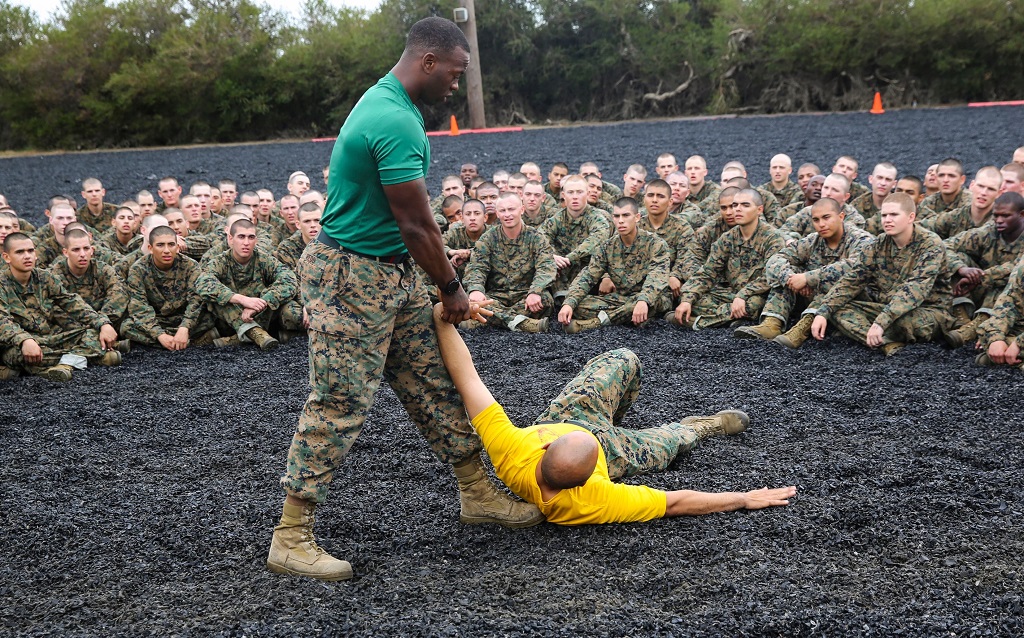Marines rarely engage enemies in hand-to-hand combat, but they must be ready when they do. Insider recently witnessed the brutal test that Marines must pass to become martial arts instructors. MCMAP combines martial arts disciplines with combat instruction, core values training, and leadership development. The program also includes warrior studies, the study of different societies that practice martial cultures.
What are the Three Pillars of MCMAP?
The pillars of MCMAP are fighting techniques, combat conditioning and character discipline. The fighting technique pillar incorporates rifle and bayonet training, knife handling and unarmed combat. The character discipline pillar instills every Marine with a warrior spirit and promotes camaraderie. MCMAP combines physical and mental instruction to make every Marine a lethal warrior.
MCMAP includes military-specific hand-to-hand fighting techniques as well as chokes, holds and throws. The Marines didn’t invent these moves, they pulled them from different martial arts systems and added a military flavor. This type of close-quarters fighting is often used in situations that are too dangerous or uncomfortable for a firearm.
Recruits earn their first belt, a tan belt, in boot camp. They then continue to train as they move up through the ranks. There are tan, gray, brown and black belts, each requiring more training time and higher levels of skill. Marines that qualify as instructors can teach other Marines to “belt up.” Marines that have reached the rank of Martial Arts Instructor-Trainer (MAIT) are eligible to train other Marines to become a tan or green belt.

What is the Army Version of MCMAP?
MCMAP uses strikes, holds, and chokes to train Marines for close-quarter combat. It teaches them to use what weapons are available, including improvised tools, while also emphasizing the responsible use of force. It replaces the linear infighting neural-override engagement (LINE) system and embodies the mantra of “one mind, any weapon.”
The first level of MCMAP is tan belt, which recruits earn during boot camp. After that, they can take martial arts classes until they reach the rank of black belt. Marines can also become MCMAP instructors but must complete an instructor training course to qualify.
MCMAP is unique because it emphasizes fighting from the ground and combining close-quarter combat techniques with morale and character development. However, if you train no gi brazilian jiujitsu or vale tudo, you’ll be better than most MCMAP “black belts.” The key is consistent practice and keeping detailed training logs so you can prove the sustainment hours you need to test out for each belt.
How Long is a MCMAP Course?
MCMAP is a military martial arts program incorporating different hand-to-hand combat styles. It is taught to Marines in order to prepare them for close-quarter combat. Marines who successfully complete the MCMAP course are awarded a tan belt. Marines who want to advance beyond a tan belt must complete the Martial Arts Instructor Training course (MAIT).
The MAIT is a rigorous seven-week course that includes 125 hours of MCMAP sustainment and classroom sessions. Marines who complete the MAIT earn a secondary military occupational specialty and can teach Marines up to the green belt level.
MCMAP is a good combatives system, but it’s not particularly effective for civilian self defense. If you train no gi Brazilian jiu jitsu and vale tudo for a year, you’ll be better than most MCMAP “black belts”. You can also take an MAIT to learn a lot more specialized combatives skills, like close-quarters fighting, weapon disarming, defensive counters and more.
The Marine Corps divides its martial arts training into five belt levels. The first, tan, is taught during boot camp and teaches Marines unarmed combat and basic knife defense. It also covers armed manipulations, grappling, joint locks, escapes and bayonet drills.
Marines can be commissioned as MCMAP instructors after completing a unit course and earning a green belt. Other service members can attend MCMAP training, but they must pay their own way and get to the course on their own. Those who want to advance in the military must keep an accurate logbook of sustainment and instruction hours, as this will determine whether they are ready to test for the next belt.
